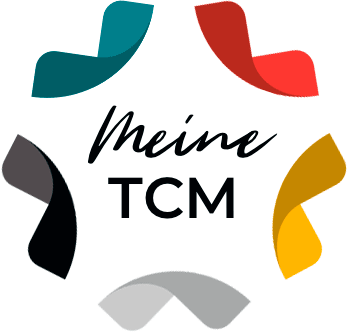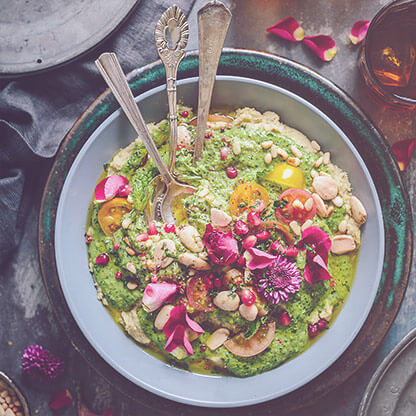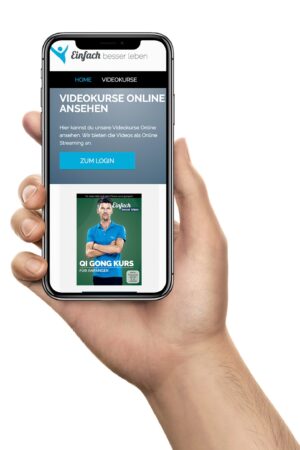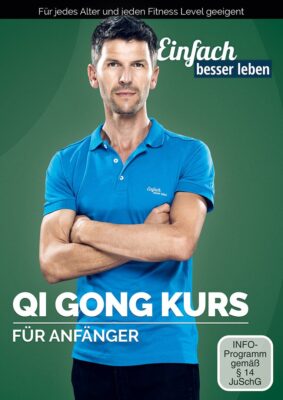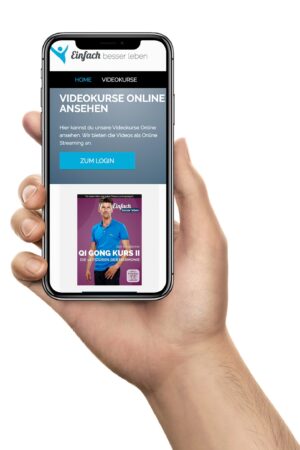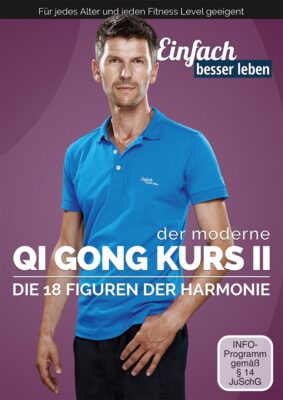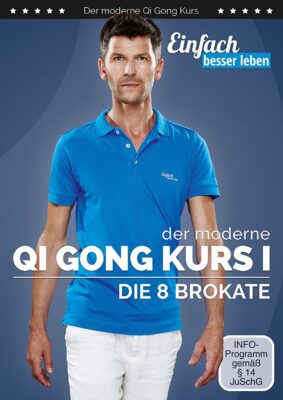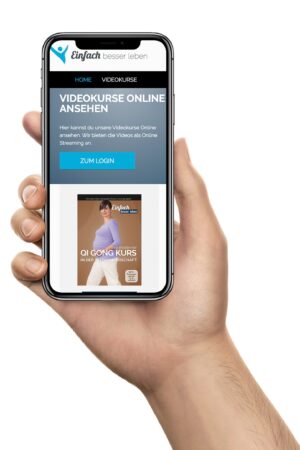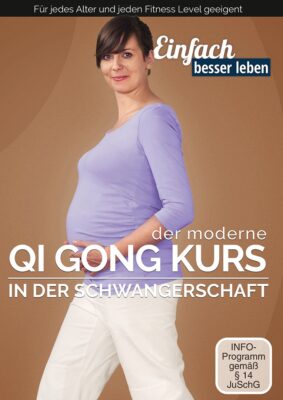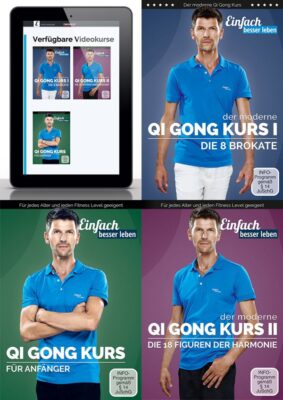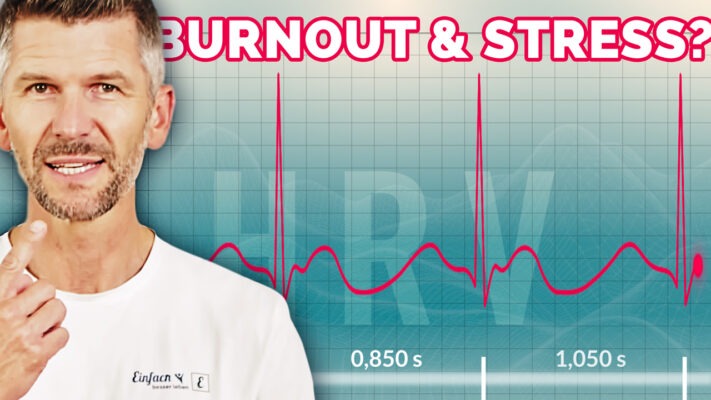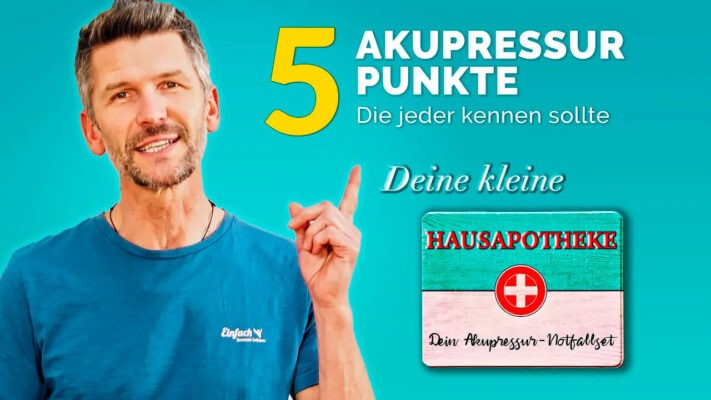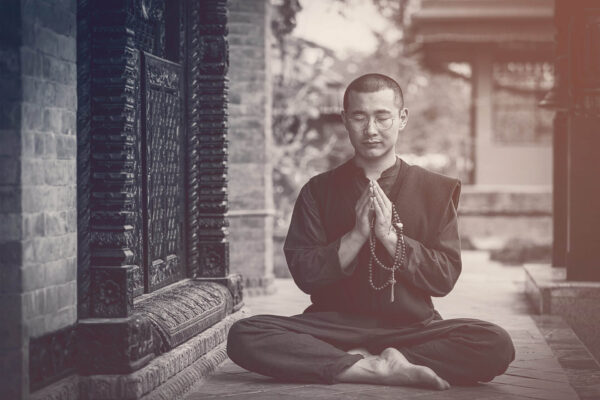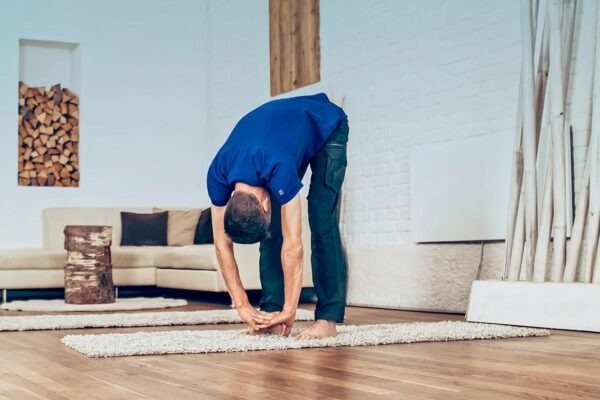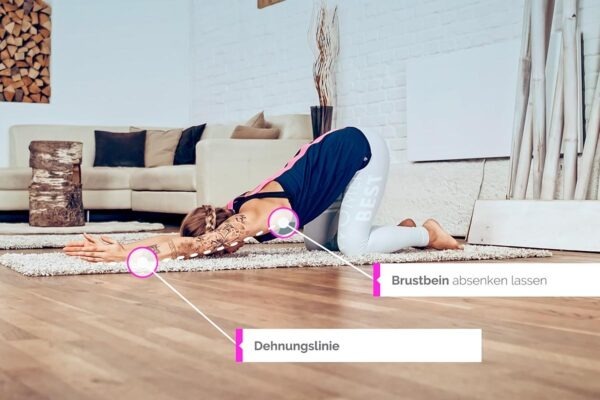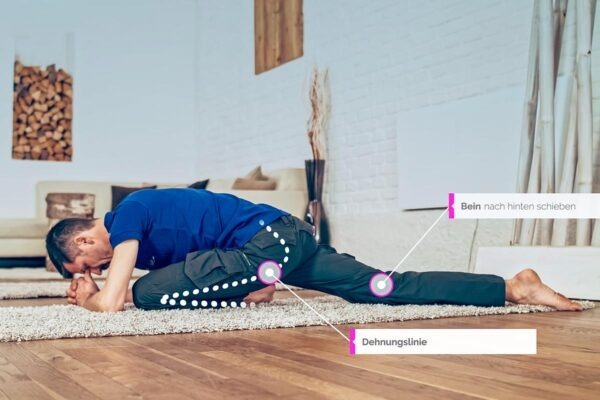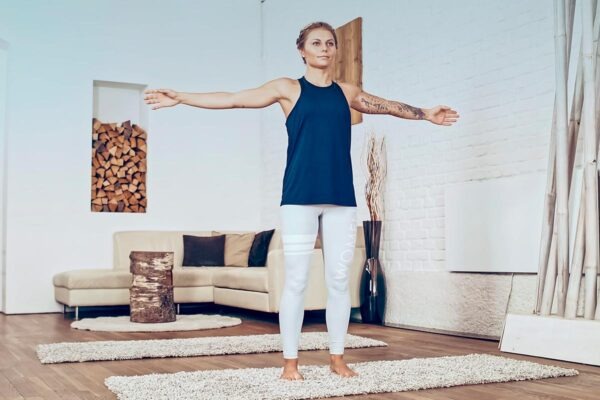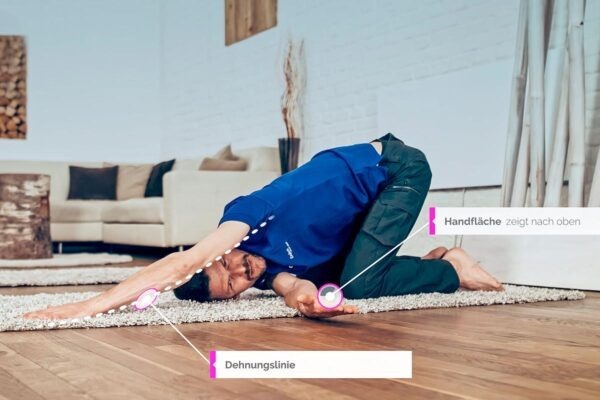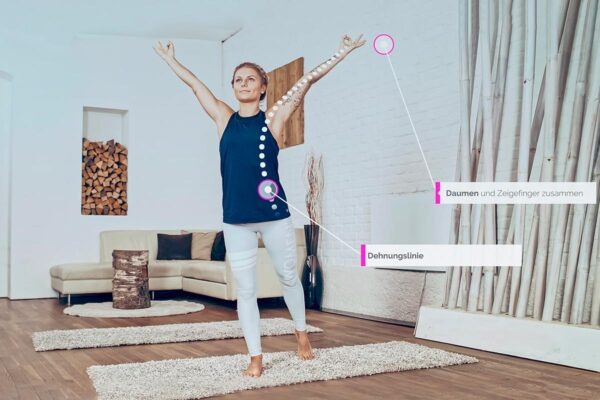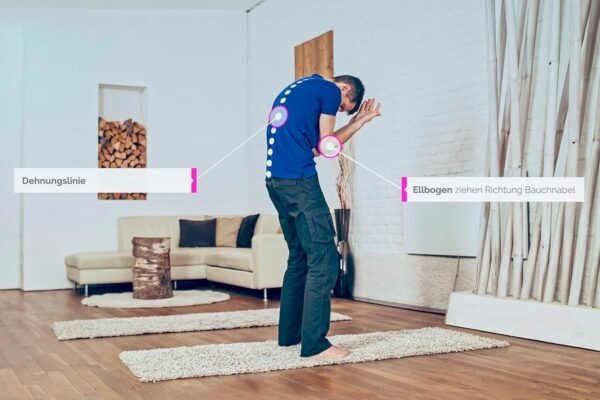Video: The basics of qigong - breathing
BREATH
Buddha, more than 2000 years ago, wrote an instruction manual for a happy and healthy life. He said: "Sit down and breathe". This is the most important exercise for happiness, Buddha taught. Just observe how the breath flows in and out. Breathing is the most important process in the body. We can live for weeks without food and for days without water, but without oxygen we can survive only a few minutes. This shows the importance of breathing.
Qi also has the meaning of air or breath. Therefore, Qi Gong is often translated as "breathing exercises" or called "breathing training". Conscious breathing is something very important in qigong exercises. It is about developing effortless and efficient breathing that supplies the whole body with oxygen and Qi.
This leads to a better oxygen supply to the blood and a general relaxation because the parasympathetic nervous system is activated. This in turn promotes the widening of the blood vessels and causes a drop in blood pressure. The chemistry in the blood is positively influenced and the acid-base ratio normalizes. The improved blood circulation becomes noticeable during the Qi Gong exercises through warm hands and feet.
But the breath is also linked to our emotions. We may "hold our breath" or find something "breathtakingly beautiful." We snort with anger, or sigh when we relax. Breathing always reflects the current state of our mind and body. Therefore, in Qi Gong we go the opposite way and influence not only the body, but also the emotions positively with the exercises.
In Chinese medicine, relaxed abdominal breathing is considered an energy pump that sends qi through the pathways. A Chinese guide says: "Qi is deeply implanted in the feet, controlled by the abdomen and manifested in the hands".
Through abdominal breathing, the dantien (center of the hara - about 4 transverse fingers below the navel) is filled with qi. Once the dantien is filled, the excess Qi begins to flow into the meridians, bones and tissues, spreading a feeling of warmth throughout the body.
Video: The basics of qigong - posture
HOLD
I would like to describe the correct posture to you using the following picture: Imagine a sailing ship with a massive mast. This is stabilized by several ropes so that it does not fall over. All ropes must have the right tension so that the mast stands straight and nothing stands in the way of sailing pleasure. This mast corresponds to our spine and hull. The hull must also be erect, otherwise we will fall over, just like a sailing ship. The body is intelligent and can avoid this, but it uses a lot of energy to keep this imbalance. I would like to demonstrate this with the head.
When the head is tilted too far forward, the neck muscles have to hold the weight and the head is heavy. This leads to tension in the neck. From the correct posture one gains healthy Qi. This is an important principle in Qi Gong. Correct posture promotes relaxation, balance, proper breathing and energy flow. It is important to first master the elementary rules of posture before practicing the more complex techniques of Qi regulation. How can the Qi flow if the body is crooked and lopsided? Through proper posture, it is easier to discover the weak and blocked zones of the body to work on them.
So what does this basic posture look like in qigong?
The back should feel long and open, so to speak. As if it were a rope being stretched slightly up and down. The idea that the highest point of the crown is stretched up to the sky by a thread helps to feel this stretch. The head floats, like a cork, on the spine. The jaw muscles are relaxed and the tip of the tongue lightly touches the upper palate to close the small circuit and form saliva. Saliva is considered the "fluid of life." The eyes are relaxed and directed straight ahead with a soft gaze, without focusing on anything.
The shoulders sink down with gravity and in the same way the sternum moves down very slightly. The neck can relax to the side and down along the spine. The arms hang relaxed on the sides of the body. In general, all joints, such as elbows or knees, should always be slightly bent and feel open so that the Qi can flow freely through these "energy gates". The pelvis is tilted slightly backward so that the pubic bone moves upward toward the navel and the tailbone is "curled" forward. This straightens the spine in the lumbar section. In the upper section this is done by stretching towards the sky.
The knee joints are relaxed to create a springy feeling. The feet are positioned shoulder width apart and the edges of the feet are parallel. In the imagination, roots grow from the soles of the feet deep into the earth. This posture is meant to connect the person with the energy of the earth and the sky. An exact posture causes the energy of the universe, without resistance, to flow through us, charging us with new life energy.
Another side effect of the aligned posture is a feeling of "sinking" or rootedness. This is accompanied by tension release and reduction of worry and mental baggage. The motto is, "Relax into the ground through your feet. Don't stand on your own feet, stand on the ground". This creates a sense of balance, support and well-being. Someone who is rooted and at rest within himself can be difficult to throw off balance. If he loses this anyway, however, he will return to it more quickly and effortlessly.
Tense body parts tend to submerge into the subconscious, where they are no longer perceived, but still cause stress and loss of energy in the body. If I am aware of my tense shoulders, they gradually relax all by themselves. If I breathe consciously, my breathing slows down. Attention is thus the first step on the path to deep relaxation and vitality.
Video: The basics of qigong - concentration
CONCENTRATION
The goal of conscious concentration is to learn to be mentally present during qigong. If you do an exercise and are not mentally present, it is called an "empty exercise", an "exercise without value". To be physically present, that is, to feel ourselves, requires nervous activity, so to speak. The nerves, through this conscious feeling into a part of the body, become active and fire more. The brain connects to the muscles through the nerve. This leads to very complex changes in the respective body part.
You can imagine how this also activates your self-healing powers. In any case, the thoughts also come to rest. The eternal carousel of thoughts, or, as it is called in Qi Gong, monkey screaming, becomes a bit calmer and maybe even completely silent. And that is pure stress reduction.
Why are we stressed? Because we tense up due to a situation and as a result we only breathe superficially. Now, if someone would take you by the hand and take you out of this situation for a moment, stand up straight and say, "Raise your arms and breathe in, lower them and breathe out. Do that for 5 minutes, please." Then, after that short time, you wouldn't be so stressed already. Because the rhythmic breathing, in combination with the conscious moving and feeling, has had a positive effect on your nervous system. Your body has switched from fight and flight mode to relaxation mode.
Concentration leads to a more economical completion of tasks, because for each task only as much force and energy as necessary is to be spent. Why exert 5 kilos of force when only 4 are needed? This extra kilo is a waste of energy. And daily waste of energy means continuous loss of vital energy. In qigong, the practitioner's knees are said to bend when a fly would sit on his shoulders. He uses just enough energy to stand so as not to sink down. This creates effortlessness and lightness in the movements.
We live in a world where exactly the opposite is done. The more we work and exert ourselves, the more successful we are seen, in the eyes of society. It is necessary for us to learn to do something without effort and strain. The following Taoist story should clarify this:
A man gets into a dangerous rapids while swimming. Confucius runs excitedly along the shore, because he fears the man could drown. When the man later reaches the shore unharmed, Confucius asks him how he was able to save himself from drowning. The man answered: "I adapt myself to the high and low of the waves. I follow the Tao of the water without thinking".
Using only as much force as necessary is an efficient way to improve health and vitality and reduce stress-related fatigue, due to mental overwork. Once the body relaxes, the mind becomes calm, aware and attentive.
Through awareness, the person becomes more sensitive to the processes in his body and to his environment. A tense body-mind system can only perceive things in a limited way. Tension also reduces the sensitivity towards other people. Try to shake the hand of a person with tense arms.
Breathing alone does not mean that one is alive. It is only a sign for the others, which body can be buried and which not.
Marlo Morgan
Different breathing methods
1. "Natural breathing
This is the basis of qigong breathing. Shunhuxi means "natural breathing". Shun actually means "to flow freely", to "go with the flow". This is also called abdominal or diaphragmatic breathing. When breathing in, the abdomen is pushed outward as the diaphragm lowers, and when breathing out, the abdomen lowers back inward so that the diaphragm relaxes. This is the most natural and effective breathing technique, because in this way the lung lobes are flooded with oxygen all the way down. The breathing rate is about 5-8 breaths per minute at rest.
2. "Inverted breathing" or counter-abdominal breathing.
This technique is called nihuxi and is the exact opposite of natural breathing. It should also be used only for "training purposes" for a short time. Under no circumstances should it be used as normal breathing, during everyday life. The technique is exactly opposite to natural breathing. When breathing in, the abdomen is pulled inward, and when breathing out, it curves forward in a relaxed manner. The breath is deep, gentle and inaudible. The concentration is always on the dantien. This exercise stimulates the Qi in the lower abdomen and trains the respiratory muscles in a very effective way.
3. "Dantien breathing
This is a very healing variant of natural breathing. The dantien represents the most important energy center of the human being. It is located about 3-4 transverse fingers below the navel. When inhaling, the lower abdomen and lower back expand outward. When exhaling, both contract again in a relaxed manner.
You can make it easier for yourself by imagining that there is a balloon in your lower abdomen that expands when you inhale and contracts when you exhale. This breathing method stimulates the important Mingmen (Gate of Life) point on the lower back.
